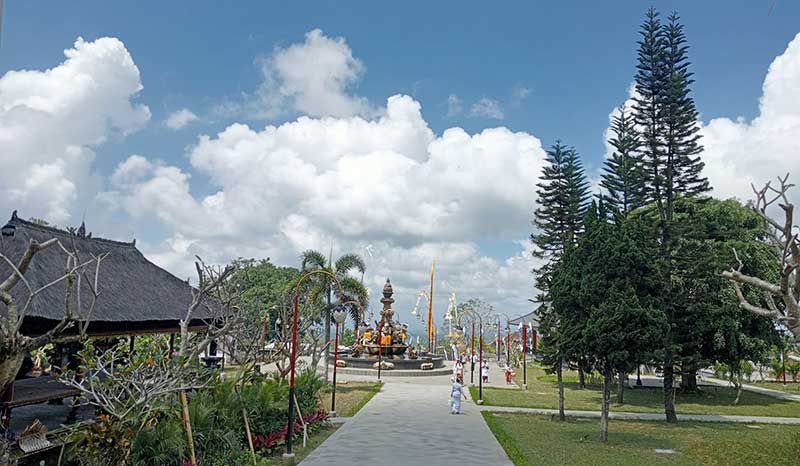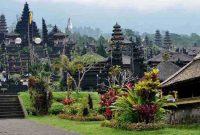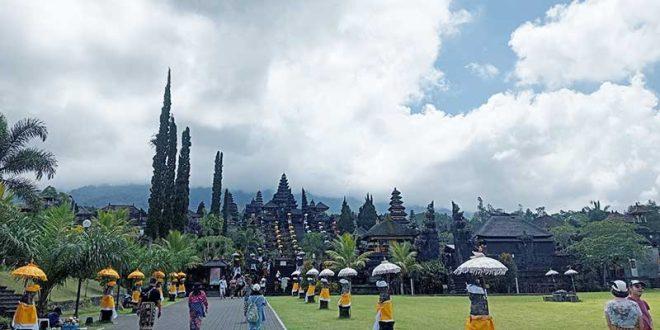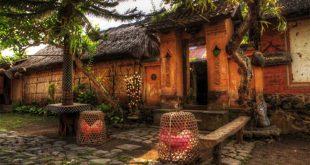Besakih Temple is a Hindu temple complex located on the slopes of Mount Agung in east Bali, Indonesia. It is considered the most important temple in Bali and is often referred to as the “Mother Temple”.
The complex comprises more than 80 separate temples, which are grouped into distinct complexes and terraces. Temples are dedicated to different gods and goddesses, and each has its own unique architecture and design.
Besakih Temple has a long and interesting history, dating back more than 1,000 years. It has survived earthquakes, eruptions, and invasions, and has been a place of worship and pilgrimage for generations of Balinese Hindus.
Visitors to Besakih Temple can explore various temples and learn about Hinduism and Balinese culture. It is advisable to hire a guide to fully understand the significance of the various shrines and rituals. In addition, visitors must dress modestly, because this Temple is a sacred site.
The beauty of Besakih Temple
Besakih Temple has a very rich and varied appeal. Some of the main attractions of Mother Temple Bali are:

Architectural Beauty
Besakih Temple has a very beautiful and unique architecture, with a distinctive Balinese Hindu architectural style. Each temple in this complex has different architectural characteristics resulting in a very interesting combination.
Religious Meaning
This Temple is a very important holy place for Balinese Hindus. As the “Mother of all temples in Bali“, this temple plays an important role in the religious life of the Balinese people. Visitors can experience and learn about the unique and interesting practices and rituals of Balinese Hinduism.
Location
Besakih Temple is situated on the slopes of the beautiful Mount Agung, offering views of the lush Balinese landscape and the mighty mountain. The surroundings also offer interesting tourist experiences, such as trekking in the mountains and exploring traditional Balinese villages.
Balinese Culture
This Temple is one of the best places to learn about the richness and uniqueness of Balinese culture. Visitors can observe religious and cultural ceremonies, as well as interact with local residents to gain a deeper understanding of daily life in Bali.
Uniqueness
The Temple is a very unique and interesting place to visit. The complex is the result of hundreds of years of change, evolution and influence of different cultures. The combination of architecture, history and religious significance makes Besakih Temple a very special and memorable tourist destination.

Temple Complex in Besakih
The temple complex at Besakih, also known as “Mother Temple Bali“, is the largest and most important Hindu temple complex in Bali, Indonesia.
The complex is located on the slopes of Mount Agung and comprises more than 80 separate temples, which are grouped into distinct complexes and terraces. Some of the most important temples in the complex include:
1. Penataran Agung Temple
This is the largest and most important temple in the complex. It is dedicated to the god Shiva, and is considered the center of the universe by Balinese Hindus.
2. Kidulin Kreteg Temple
This temple is a place of worship for the god Vishnu and is located on the second terrace of the complex. Known for its unique architectural designs and intricate carvings.
3. Batu Madeg Temple
This temple is located on the highest terrace of the complex and is dedicated to the goddess Durga. It offers stunning views of the surrounding mountains and rice fields.
4. Pangubengan Temple
This temple is dedicated to the god Indra and is located on the third terrace of the complex. Famous for its beautiful carvings and statues.
5. Merajapati Temple
This temple is dedicated to the god Brahma and is located on the second terrace of the complex. Known for its unique architecture and central location within the complex.
Visitors to the temple complex in Besakih can explore the various temples and learn about Balinese Hindu religion and culture.
It is recommended to hire a guide to fully understand the significance of the various shrines and rituals. In addition, visitors must dress modestly, because the temple complex is a sacred site.







